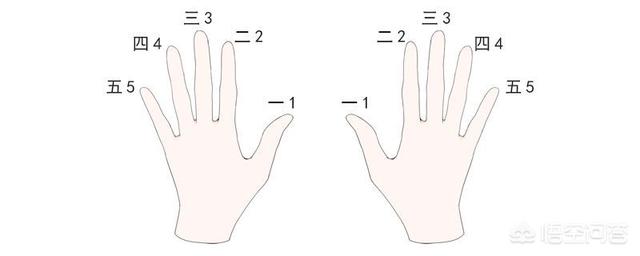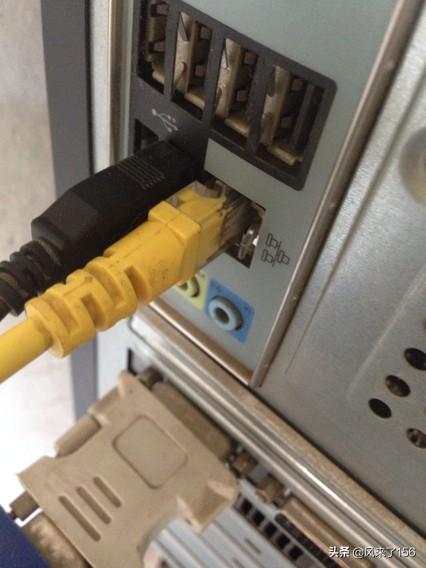火车卧铺图片硬卧(火车卧铺图片硬卧号码)
alicucu 2025-12-21 21:52 2 浏览
全卧铺列车有:Z3/4,Z21/2,Z11/2,Z77/8,Z71/8,Z15/6,Z61/2,Z85/6,Z9/10,Z49/50等直特列车。
还有k3/4,k19/20国际列车也是全到卧铺。
现在部分旅游专列也是全列卧铺。
全到卧铺列车,它具有非常人性化的服务,旅客在列车上可以享受高品质的体验。
可以说:罕见的全卧铺列车一觉睡到终点。
普通火车有硬座,硬卧,软卧,还有软座的。
硬座和软座的区别:
硬座和软座的区别是硬座一排左右两侧加起来共5个座位,而软座一排左右两侧加起来只有4个座位,硬座的座位比较硬,软座座位要宽一些,坐着要舒服一点。
硬卧和软卧的区别:
1、一个最重要的区别,是到晚上熄灯的时候,硬卧车厢间可以互相走动,软卧车厢内部也可以走动,但是他们之间的门,就是锁住的。
2、客运乘务员应熟知列车沿途的风景名胜、历史文化、地方物产、风土人情等。软卧列车员至少能用英语为旅客服务。进入包房时,应先敲门,经允许后方可入内。离开时,应退出包房后转身离去。客人离开包房时应及时整理包房卫生,软卧专有。
3、硬卧、软卧的走廊和包房内应有地毯。车窗有纱帘、遮光帘。铺位上有质地良好的纯棉布棉褥(毛毯)、褥单、棉被、被罩、枕蕊、枕套。茶桌有台布、不锈钢盘。软卧还应有衣架、拖鞋、衣刷、不锈钢暖瓶(防倒架)、带盖细瓷茶杯、卫生桶。
4、硬卧晚上有乘客在走廊走动、喧哗,休息受影响。软卧相对安静、安全,条件好些、铺位软些、价格贵一些。
硬座,是铁路客运的一种席别,实际指的就是座位车。是旅客坐在座位上乘车的车辆。硬座车是铁路上数量最多的车辆。车辆内部的顶部两侧设有一排行李架,可以放置东西,在我国的铁路硬座车里,一般都是3加2的分布,中间是过道,两侧是座位。一排三人的座位,另一排是二人的座位。靠近门口的最边上座位为2加2的座位,每个座位之间都有小的桌子。绝大多数的硬座车的窗子上都设有窗帘。两个窗户之间的地方都有座位的标识。
软座,软座一种座位中有扶手,一种没有扶手,比硬座舒服一点,对号入座,不是所有的旅客列车都有软座,票价要比硬座贵。对车厢进行控制,没有软座车票的乘客不能进入。
软座一般在动车组、特快、直达列车才有,有的分一等座和二等座。
硬卧的一侧设有铺位,一般的硬卧车都是上,中,下三层铺位,铺位的宽度比硬座车的座位的宽度宽些,上边铺设有褥子,被子和枕头这些卧具。以及水壶等物件。不同的型号以及地区的硬卧车内的设施也各有不同,不同类别的硬卧车内的设施也不一样。
硬卧车的类别比较的单一,而不像软卧车分为普通的软卧和高级的软卧。组成硬卧车的材质和硬座车一样,只不过是把座位当成卧铺来使用,并且硬卧和硬座的材质都一样,虽然比较硬,但富有弹性,称为硬卧。硬卧是座位车以外最普遍的铁路车种。
软卧:有卧具,乘客可以躺在卧铺上休息,比硬卧价格贵。设施舒服,4人一个包厢,分上、下铺位,提供热水瓶,环境安静,没有打搅。是旅客列车中最舒服的一种形式之一。 软卧列车也分两种:普通软卧和高级软卧。普通软卧4人一个包间,高级软卧2人一个包间,但是并非所有列车都有高级软卧。高级软卧车每个双人间包房内有洗手间、、沙发、液晶电视、呼叫电话等设备。在25K,25T的软卧车厢都有电视,牙具一次性拖鞋配备。
拓展资料:
火车硬座就是车辆内部的座椅,类似高铁二等坐,每排分3+2布列的形式,中间是过道,硬座每排五个座位,以走道分开,一边两座长椅、一边三座长椅,虽称硬座但是坐着不硬。
除了火车硬座之外,还有无座,软座、硬卧、软卧,餐车茶座等几种乘车方式,但硬座是最便宜的乘坐方式之一(无座的价格等同硬座)
因为其价格低廉,所以被广大人民群众所喜爱,特别是农民工朋友。但也因为其价格低廉,而且硬座车厢同时出售“无座”车票,因此在运输高峰时期,车厢内人多杂乱,卫生、环境和舒适度都很不理想,因为不像卧铺车厢那样实行严格的管理。但随着近几年铁路部门对服务质量的提高,火车硬座的性价比也越来越高,舒适程度有所改善。
软硬区别
区别1、软座价格比硬座高10%到15%
普通列车的硬座
普通列车的硬座
区别2、硬座每排坐5个人,是3+2型,而且座位是硬板;软座每排坐4个人,是2+2型,座位是沙发座;
区别3、学生软座不能打半票,硬座可以;
区别4、硬座是一边二人座、一边三人座,坐着不拥挤软座两边都是双人座,宽敞;
区别5、硬座可以超员,车厢内有站立者,软座没有超员一说,有多少座位卖多少票;
区别6、硬座是一个列车员服务于一百多旅客,软座是二、三个列车员服务于七、八十位旅客;
区别7、硬座是旅客自己去打开水,软座是列车员送水到座位前;
区别8、坐硬座你可以抽烟,要在软座这样你就会被赶到硬座去
区别9、硬座车厢是乘客随便上车,没有座位的站票也可以上车,软座车厢是凭票上车,只有有软座座位票的乘客可以上车,人员也很单纯,比较舒适安全。
- 上一篇:穿越架空言情完结小说(穿越架空言情完结小说有哪些)
- 下一篇:喂(喂能换什么偏旁)
相关推荐
- 苏泊尔电饭煲e0故障(苏泊尔电饭煲e0故障维修视频)
-
显示e0是传感器开路故障。先拆开顶部检查温度传感器连接线是否断路,通常这个部件由于经常使用,而且材质都不好,导致温感器的连接线断裂。如果是线路断裂,则找一根相仿的电线连接断裂部分,并用电工胶带做好绝缘...
- 最恐怖的台风第一名(世界最恐怖的台风)
-
是威马逊台风。威马逊台风于2014年7月登陆我国的海南省文昌市,这个超强台风自登陆上岸后,就打破了之前2006年的桑美台风的记录,成为了我国建国以来强的超强台风,直接导致南宁这个城市发生海变,城市内部...
- 干燥剂有哪几种(食品干燥剂有哪几种)
-
1、酸性干燥剂:浓硫酸、P2O5、硅胶浓硫酸(强氧化性酸)、P2O5(酸性白色粉末)、硅胶(它是半透明,内表面积很大的多孔性固体,有良好的吸附性,对水有强烈的吸附作用。含有钴盐的硅胶叫变色硅胶,没有吸...
- 家用直饮水机(家用直饮水机十大名牌)
-
1、看直饮机是否有卫生许可证批件上所写的产品名字、型号要一致,因为即使在有证企业中,也存在“一证多用”的情况,即出现多个产品型号用一个卫生许可批件,消费者一定要查看清楚。2、看直饮机滤芯是否合适第一代...
- 滚筒洗衣机排行榜2025前十名
-
各有好处。1,上排水排的并不彻底,水泵处会有积水,要是放在特别冷的地方就需要在每次洗完衣服后动手给水泵排水。但也不会影响洗衣效果,因为有单向阀门限制水流向。但上排水在布置排水管时简单,上下都能排。2,...
- 世界美女排行榜前一百(世界美女排行榜100名2019)
-
2021年即将进入尾声,美国网站TCCandler每年都会选出全球百大美女排行榜,如今官方名单出炉,今年的第一名是韩国女团BLACKPINK的成员Lisa,去年是第二名。EmilieNereng今...
-

- 电子琴1234567指法图(1234567手势图)
-
尤克里里1234567的指法三弦空品是1,三弦二品是2,二弦空品是3,二弦一品是4,二弦三品是5,四弦空品也是5,一弦空品是6,四弦二品也是6,一弦二品是7。在弹奏尤克里里的时候要注意,手型是使用的古典手型,左手的一指左侧按琴弦,其余的手指...
-
2025-12-24 05:12 alicucu
- 长沙房产网(长沙房产网房天下)
-
长沙房地产公司排名1、湖南鑫远投资集团有限公司2、红星实业集团有限公司3、中建信和地产有限公司4、恒大地产集团长沙置业有限公司5、湖南保利房地产开发有限公司6、湖南天城置业发展有限公司7、长沙龙湖房地...
- 电子烟(电子烟有尼古丁吗)
-
电子烟是由中国人发明的,这个毋庸置疑。多数资料及实验显示。电子烟除尼古丁之外没有发现其他任何有害成分,对人体的不利影响也低于传统香烟。原材料不同:电子烟是微电子科技产品,有雾化器、锂电池和烟弹。目前市...
- 今年最流行的头发造型(今年最流行的头发造型和颜色)
-
时尚流行和个人喜好是选择头发颜色时需要考虑的因素,不过每年的流行趋势都会有所不同,以下列举几种近年来比较受欢迎的头发颜色:1.灰棕色:灰棕色是一种既低调又独特的中性色调,适合许多不同的肤色和发质,也非...
- 榴莲吃不完冷藏还是冷冻(榴莲冷冻的正确方法)
-
吃不完榴莲肉大多数可以冷冻,冷冻过后可能口感上会有一些差异,但是里面营养物质并不会流失,可以在吃时候解冻。但是避免长时间的冷冻,也会导致营养价值降低。榴莲的保存一般是冷冻比较好,而且可以存放的时间比较...
-

- 北京四达烂校211(北京四达国际)
-
没有最差的211之说,能被评为211大学都是有过硬的学术研究和科研能力。大学是教书育人的地方不是进行攀比名气的场所首先,北京语言大学身处首都,占据地理优势,另外这个学校虽然不是双一流学校,不是211学校,但是有些专业很不错,尤其是小语种,而...
-
2025-12-24 02:59 alicucu
- 龙的英文(龙的英文gala)
-
dragon读音:英[?dr?g?n]美[?dr?ɡ?n]n.龙,龙船;[D-][天文学]天龙(星座);[口语、贬义]脾气暴躁的人复数:dragons例句:1、Later,drag...
-

- 网线颜色顺序(网线颜色顺序水晶头)
-
网线颜色的顺序是有相应的标准的!TIA568B/568B就是!我们现在用的是TIA568B的标准!在以前的计算机网卡或是集线器,路由器,交换机等并不支持网线发送和接受的自动翻转!这就需要两个标准,同设备间做手动翻转来使两个设备可以通讯!比如...
-
2025-12-24 01:59 alicucu
- 芈月母亲向氏历史原型(芈月母亲向氏历史原型是谁)
-
芈月母亲向氏是莒姬宫里的媵女,因生育芈月被封为向夫人,后因生育芈戎被封为向妃。后来因为被王后趁大王不在诬陷她染上恶疾被赶出宫,被贱兵魏甲玷污,后来生下魏冉。大王回宫后接向妃回宫,为了给芈月芈戎换的好前...
- 一周热门
- 最近发表
- 标签列表
-


